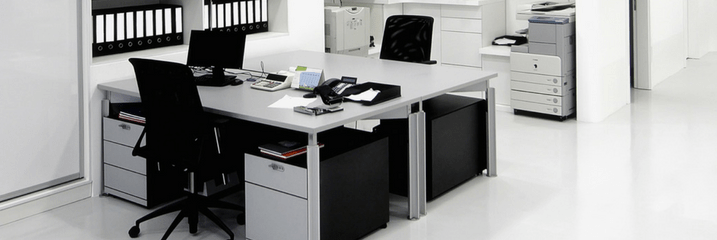Most legal professionals spend a good part of their workday sitting in an office chair staring at a computer. Although sitting at a desk is an essential part of the job, paralegals and legal assistants should make sure that their desk set up is not increasing their stress or otherwise harming their health.
You can routinely evaluate your office environment for ways to reduce stress and improve your desk arrangement by:
- Keeping your desk as uncluttered as possible so you can find things quickly and avoid additional frustration in high-pressure situations.
- Setting up your computer as efficiently as possible.
- Evaluating your reactions in times of unavoidable stress to help keep your emotions at bay.
Read more: Feeling stressed out? Here are 7 ways to find relief right now >>
Your workspace should also be designed with safety and comfort in mind using the research and insights from the science of ergonomics, which the U.S. Department of Labor Occupational Safety and Health Administration (OSHA) defines as the “study of work.”
Ergonomics for the busy paralegal
Ergonomics, or the science of designing or arranging a workspace to fit and benefit the worker rather than forcing the worker’s body to fit the job, should be a consideration for every office worker. It’s especially important for paralegals, legal assistants, and other legal professionals who sit for extended periods of time in a cubicle or at a desk that may or may not have created with their needs in mind.
Some tips to create a healthy working environment through proper ergonomics:
- Use a well-made, adjustable office chair with padded, adjustable arms.
- Position your computer monitor 18 to 24 inches away from where you are sitting, and approximately 15 to 30 degrees below your line of sight. This will help you avoid craning your head and shoulders forward to look at the screen, since your neck isn’t meant to support this kind of weight.
- Maintain neutral posture, which minimizes the stress applied to muscles, tendons, nerves, and bones. Your feet should rest flat on the floor, with your upper and lower legs bent at the knee at a right angle, your back slightly arched, your neck straight, and your upper and lower arms at right angles. If you are short and your feet dangle or barely reach the floor, you may need a stool or footrest. Keep your wrists straight, with your fingers slightly curled or relaxed.
- If you use a keyboard wrist rest, use it properly. Your wrists should not be bent or touch the pad while you type. You should rest your wrists only on the pad when you are not typing.
Prolonged sitting (and standing) bad for your health
Sitting has been called “the new smoking,” and it has been widely publicized that sitting for long periods of time, even with occasional exercise, has a negative effect on health. An Australian study concluded that adults who sat 11 or more hours per day had a 40 percent increased risk of dying during the next three years compared to those who sat less than four hours a day.
If you sit for more than six hours a day, here are some sobering statistics:
- You are increasing your risk of heart disease by as much as 64 percent.
- You are giving up as many as seven years of quality life.
- You are more at risk for certain types of cancer, such as colon and rectal cancer.
But standing desks can also do harm, mainly because workers are not taught how to correctly utilize them, according to New York Times, and standing still all day has been shown to be no better than sitting. Standing desks can compress the spine, lead to lower back problems, and boost your risk for carotid arteries, varicose veins, deep vein thrombosis and other cardiovascular problems.
Best of both worlds?
Fortunately, there are two things you can do to counteract the harmful effects of sitting or standing still too much:
- Going from sitting to standing and vice versa every hour.
- Getting about 30 minutes of physical activity each day.
Short breaks from sitting once an hour have the potential to alleviate many of the problems creating by excessive sitting. According to the U.S. Centers for Disease Control and Prevention (CDC), creating small periods of moderate activity throughout the day and giving your body a break are associated with a variety of health benefits, including weight loss and a lowered risk of diabetes, stroke, and hypertension.
Read more: 5-minute yoga moves>>
Have you found ways to optimize your desk set up or otherwise create a healthier work environment? Tell us about your experience in the comments!








